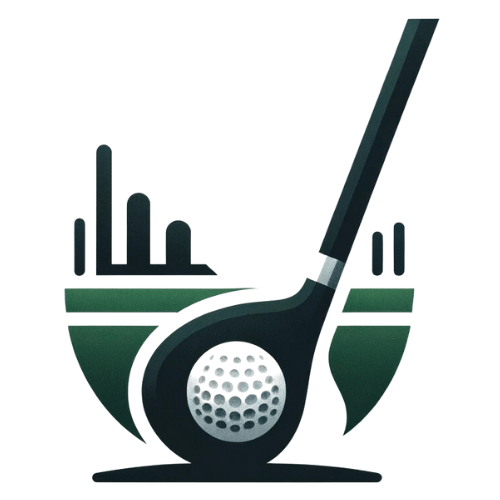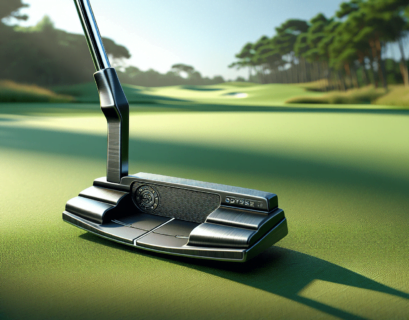Embark on a journey to master the art of golf fairway maintenance and care with the Ultimate Guide! Maintaining a lush, vibrant fairway isn’t just about keeping it looking pretty; it’s about creating the perfect playing surface that makes every swing and every hit as satisfying as possible. From the basics of mowing patterns that support healthy grass growth to the nitty-gritty of soil fertility and pest control, this guide covers everything you need to ensure your golf fairway remains in top-notch condition. Whether you’re a seasoned groundskeeper or a golf enthusiast looking to deepen your knowledge, this guide promises to equip you with the skills and insights to elevate the game for everyone who steps onto the fairway.
Understanding The Importance of Fairway Maintenance
Fairway maintenance might not be the first thing on your mind when you’re teeing off, but it plays a crucial role in the game of golf. It can significantly affect the quality of your game, the health of the turf, the beauty of the course, and even your safety. So, let’s dive a bit deeper into why it’s so vital.
The impact on game quality
You’ve probably noticed the difference in playability on a well-maintained fairway versus one that’s been neglected. Smooth, uniform grass provides predictable ball roll and resistance, making the game fairer and more enjoyable for everyone. In contrast, a poorly maintained fairway can lead to unpredictable plays and frustration.
The effect on turf health
Healthy turf is resilient turf. Regular mowing, aeration, and fertilization help the grass withstand the wear and tear of golf play, extreme weather, and pests. When neglected, the turf can quickly become a breeding ground for diseases and pests that can ruin the fairway for a long time.
Importance for aesthetics and course reputation
Let’s face it; appearance matters. A beautifully maintained fairway is a pleasure to play on and adds to the overall prestige of the golf course. It’s a symbol of the care and dedication the course management puts into giving you the best playing experience possible.
Safety of players
Uneven surfaces, holes, and slippery areas not only affect your game but can also be a hazard. Regular maintenance ensures that the fairways are safe for players, reducing the risk of injuries and accidents.
Grass Types and Their Maintenance Needs
Different grass types have varying maintenance requirements. Choosing the right grass is crucial for fairway health and performance.
Bermuda grass
Bermuda grass thrives in warm climates and can tolerate heat, drought, and heavy foot traffic. It requires full sun and benefits from regular mowing to maintain its dense, carpet-like quality.
Kentucky Bluegrass
Perfect for cooler climates, Kentucky Bluegrass has excellent cold tolerance and requires regular watering and fertilization to maintain its lush appearance. It has a relatively slow recovery from wear, so it needs careful management.
Annual Ryegrass
Annual Ryegrass is often used for temporary needs or to overseed dormant Bermuda grass in cooler months. It’s fast-growing and provides a quick green cover but requires more frequent mowing to keep it in check.
Creeping Bentgrass
Ideal for high-quality golf fairways and greens, Creeping Bentgrass requires intensive maintenance, including frequent mowing, aeration, and careful watering, to maintain its fine texture and dense growth.
Zoysia grass
Zoysia grass combines the heat tolerance of Bermuda grass with the texture and color of cooler climate grasses. It requires less water than most grasses but does need regular dethatching to prevent buildup and encourage new growth.

Mowing and Grass Maintenance
Proper mowing practices are crucial for healthy fairways.
Proper mowing techniques
Using sharp blades and varying your mowing pattern can prevent stress and damage to the grass. Mowing at the right height for your grass type encourages healthy roots and prevents weed invasion.
Optimal mowing frequency
The growth rate of the grass, influenced by season and weather, determines mowing frequency. During the growing season, more frequent mowing may be necessary to maintain the ideal height without stressing the grass by removing too much at once.
Mower maintenance and sharp blades
Regular maintenance of your mowing equipment ensures clean cuts that heal faster. Dull blades tear the grass, leading to stress and disease susceptibility.
Mowing patterns and its effects
Alternating mowing patterns prevents wear patterns and soil compaction, ensuring even exposure to sunlight and nutrients across the fairway.
Height and health of grass blades
Maintaining the proper height for your specific grass type encourages deeper root growth, which helps with water and nutrient absorption, overall improving the resilience of the turf.
Fertilization and Aeration
Both fertilization and aeration are essential to maintain the health and beauty of the fairway.
Nutrient needs of turfgrass
Different grass types have specific nutrient needs. A soil test can help determine your fairway’s requirements to customize your fertilization plan.
Fertilizer application techniques
Even distribution and the correct type of fertilizer ensure your grass gets the nutrients it needs without the risk of burning or overgrowth.
Best time to fertilize fairway
Timing your fertilization efforts can maximize growth and health. Generally, it’s best to fertilize during the growing season, but the exact timing depends on your grass type and climate.
Understanding the aeration process
Aeration involves creating small holes in the soil to allow air, water, and nutrients to penetrate the grass roots. This helps the roots grow deeply and produce a stronger, more vigorous fairway.
Benefits of fairway aeration
Aerating your fairway reduces soil compaction, enhances thatch breakdown, and improves water, nutrient, and oxygen penetration, leading to healthier turf.

Irrigation and Water Conservation
Efficient water management is key to sustainable fairway maintenance.
Determining the right amount of water
Too much or too little water can harm your fairway. The right amount depends on your grass type, soil, and current weather conditions.
Efficient watering techniques
Irrigation systems should be regularly checked for leaks and coverage efficiency. Watering deeply and less frequently encourages deep root growth.
Time and frequency of watering
Early morning is the best time to water, reducing evaporation and wind interference. Adjust your watering frequency based on weather conditions and soil moisture levels.
Benefits of irrigation system
A well-planned irrigation system can save time and water by delivering the right amount of water directly where needed.
Importance of moisture readings
Moisture sensors can help prevent over or under-watering by providing accurate soil moisture readings, allowing for precise irrigation adjustments.
Weed Control and Pest Management
Managing weeds and pests is crucial for maintaining the appearance and health of your fairways.
Common weeds on golf fairways
Identify common weeds in your area to develop an effective control strategy. Each weed type may require a different approach.
Herbicide use and precautions
While herbicides can be effective, they should be used judiciously to avoid harming the grass or the environment. Always follow label instructions and safety precautions.
Identifying and dealing with turf pests
Early identification and management are key to controlling turf pests. An integrated pest management strategy can help minimize damage while being environmentally responsible.
Integrated pest management strategies
This approach involves monitoring pests, understanding their life cycles, and using a combination of cultural, physical, biological, and chemical management tools.
Identifying and Managing Turf Diseases
Disease management is crucial for maintaining the health and beauty of your fairways.
Common turf diseases in golf fairways
Familiarize yourself with common diseases that affect your grass type so you can spot signs early. Each disease has its own set of symptoms and treatment strategies.
Disease prevention strategies
Preventative measures, such as proper mowing, watering, and fertilization, can make your fairway less susceptible to diseases.
Dealing with disease outbreaks
Quick and appropriate action can prevent disease spread. Identify the disease, and apply the recommended treatment while adhering to environmental guidelines.
Disease-resistant grass varieties
Choosing disease-resistant grass varieties can significantly reduce the prevalence of turf diseases on your fairways.
Seasonal Maintenance Considerations
Every season brings its own set of maintenance challenges and opportunities.
Preventative spring care
Spring is the time to prepare your fairway for the upcoming busy season with aeration, fertilization, and reseeding of damaged areas.
Summer maintenance challenges
Heat and drought stress require careful water management and possibly adjusting mowing practices to maintain turf health.
Autumn preparations for winter
Fall is the time to strengthen your fairway against the coming cold with fertilization and possibly overseeding for winter color.
Winter care and damage prevention
In areas with cold winters, protect your fairways from frost damage and use the downtime for equipment maintenance and planning.
Renovating and Redesigning Fairways
Sometimes, a fresh start or strategic redesign is necessary.
When to consider renovation
Significant pest damage, drainage problems, or the desire to update the course layout might make renovation necessary.
Redesign for improved playability
Redesigning a fairway can enhance the strategic challenge and enjoyment of the course, attracting more players.
Renovation techniques and considerations
Renovation might involve reseeding, sodding, or even changing the grass type. Planning is essential to minimize the impact on play.
Impact on regular play during renovation
Proper scheduling and communication with players can help manage expectations and minimize disruptions during renovation work.
Training and Staffing for Fairway Maintenance
Having a well-trained maintenance team is crucial.
Skills and qualifications for maintenance staff
Staff should be knowledgeable in agronomy, irrigation systems, pest management, and the specific maintenance needs of your fairway’s grass type.
Best practices for training staff
Ongoing training and certification can keep your team up to date on the latest best practices and technologies in fairway maintenance.
Scheduling and managing maintenance tasks
Efficient scheduling ensures that all maintenance tasks are performed at the optimal time with minimal disruption to players.
Safety protocols for maintenance staff
Safety training and protocols protect your staff and players from potential hazards associated with maintenance equipment and materials.







